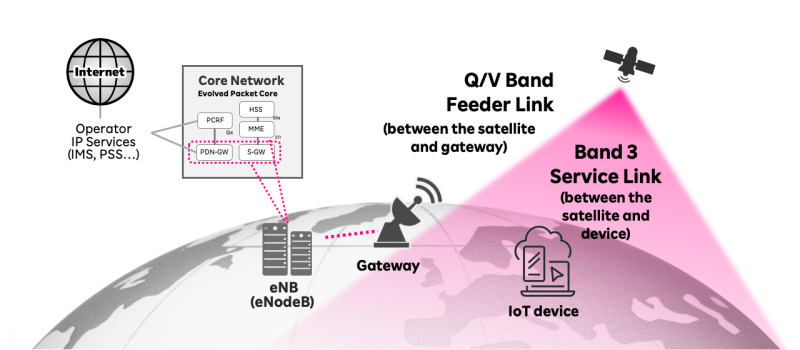Rakuten Mobile already invested in LEO satellite venture AST SpaceMobile with plans to help cover Japan’s population with wireless service. Now the operator has started up R&D work with the University of Tokyo that aims to extend coverage for IoT devices and services via an LTE-based LEO satellite network.
The work is focused on narrowband IoT (NB-IoT), which doesn’t require a lot of spectrum resources and is well suited for low-power devices that send small amounts of data intermittently – such as smart meters and sensors.
The plan is to build an IoT network using LEO satellites to reach 100% geographical coverage and enable long-distance connectivity for existing NB-IoT devices for what it’s calling “IoT ultra coverage,” as well as determine new use cases for services connecting NB-IoT and LTE devices.
RELATED: Rakuten collaborates on next-gen autonomous networks R&D project
Rakuten said that by building the satellite network low cost IoT service will be possible for industries in areas usually out of reach of network coverage, like mountainous areas, remote islands or at sea.
The network would be able to collect data directly from IoT sensors – similar to AST SpaceMobile’s aim for smartphones. AST, which also counts Vodafone, American Tower, Cisneros, and Samsung as investors, envisions seamless roaming to and from terrestrial cellular networks based on a revenue sharing model and without the need for specialized hardware. It launched its first satellite in March 2019 and is initially focused on 4G, followed by 5G down the line. Rakuten has said it would work with U.S.-based SpaceMobile to cover about 4% of Japan’s population that the operator can’t reach with its terrestrial mobile network.
RELATED: AST's satellite service connects directly to cell phones on carriers' networks
For the new R&D project Rakuten is focused, through its partnership with SpaceMobile, on constructing the LTE-based satellite communications network. Both Rakuten and the University of Tokyo Graduate School of engineering will conduct R&D to stabilize and optimize LTE satellite communications, and develop and deploy NB-IoT software for LEOs. Together the partners will investigate use cases and conduct trials for IoT ultra coverage.

Rakuten’s new joint R&D effort is running from November until the end of March 2025. Research activities fall under a theme for Japan’s National Institute of Information and Communications Technology (NICT) “Beyond 5G R&D Promotion Project.”
Last month Rakuten started a separate effort under NICT’s Beyond 5G project, working with partners Nagoya University and Oki Electric Industry to explore and develop technologies for next-generation autonomous mobile networks.
On the IoT front, Luxemburg-based OQ Technology is another LEO satellite venture targeting NB-IoT connectivity. OQ launched its first satellite this summer and has sights on verticals like oil and gas, maritime, logistics, transport, and drones to support IoT.
RELATED: NB-IoT, LTE-M stay hitched to LTE waveform
In the U.S. major carriers have deployed NB-IoT terrestrial networks for low power devices and applications that don’t require a ton of bandwidth and aren’t as latency sensitive. T-Mobile’s nationwide NB-IoT network went live in 2018, followed by Verizon and AT&T in 2019. However, not all efforts have been a roaring success. In March 2020 Japan’s NTT Docomo said it was terminating NB-IoT service after launching it almost a year prior, citing the business environment.